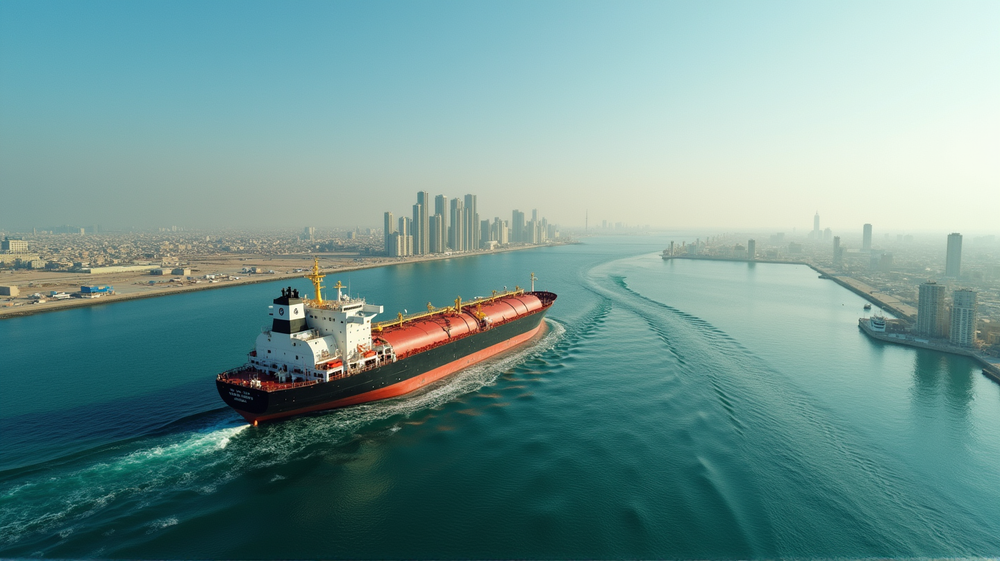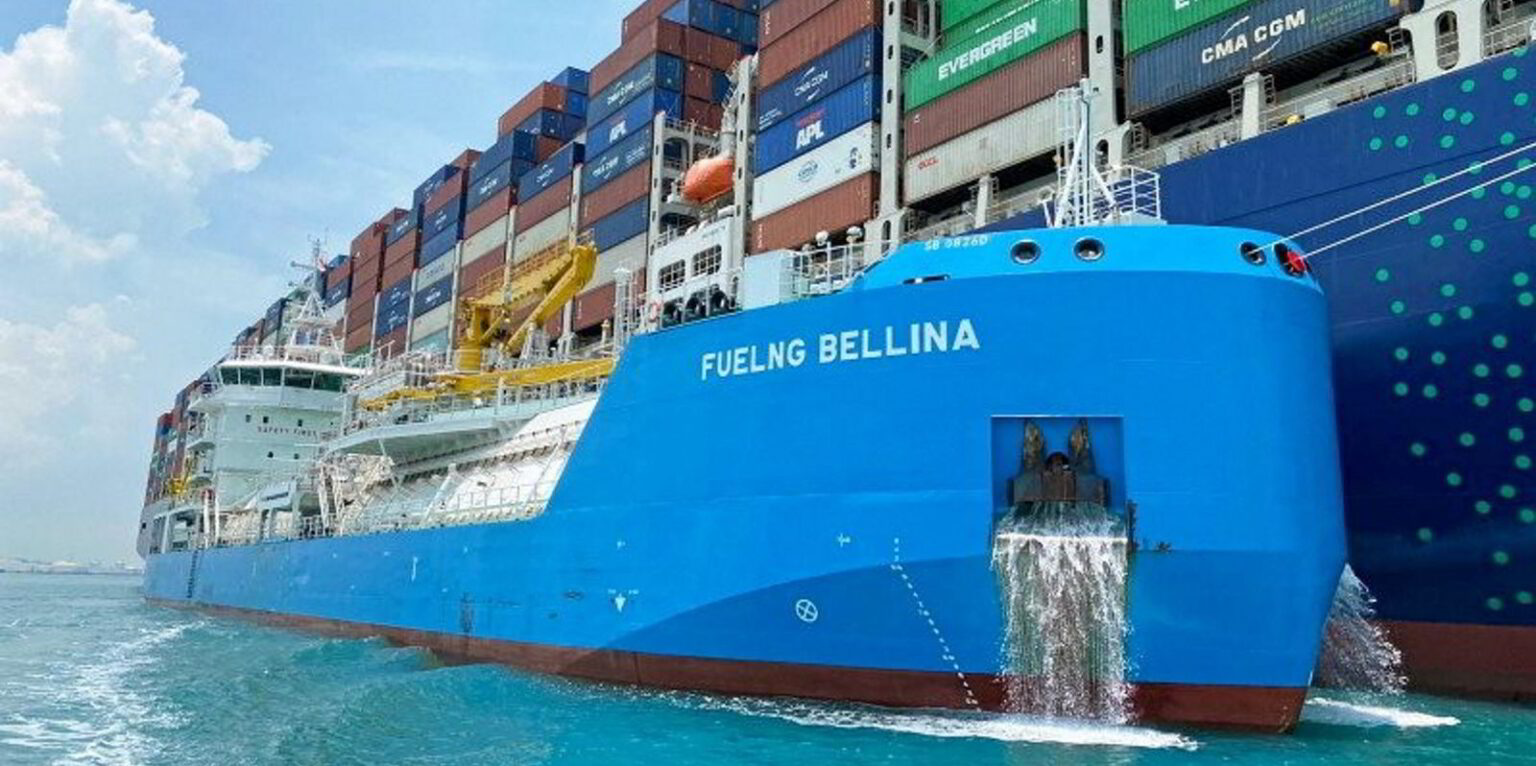Bahrain is preparing to mark a major turning point in its energy strategy as the country gets ready to welcome its very first cargo of liquefied natural gas (LNG). This move officially makes Bahrain the newest LNG importer in the Middle East. With this step, the small Gulf kingdom is not only increasing its energy security but also showing a growing interest in cleaner and more flexible energy sources.
The arrival of the LNG cargo is expected this month, marking the official launch of Bahrain’s LNG import infrastructure. This development is set to play a big role in meeting the country’s future energy needs and ensuring long-term fuel availability for both power generation and industrial use.
Why LNG, Why Now?
For years, Bahrain has relied heavily on domestic oil and gas production to power its economy. But rising domestic energy demand, aging oil fields, and a changing global energy market have pushed the country to seek alternative options. LNG, known for being a cleaner-burning fossil fuel compared to coal and oil, offers a more flexible and globally available supply option.
Bahrain’s decision to start importing LNG is part of a broader regional trend in the Gulf and Middle East, where several countries are now focusing on energy diversification. It also signals a shift toward more environmentally conscious fuel sources and shows Bahrain’s commitment to being part of the global move toward sustainable energy transitions.
The Technology Behind the Transition
At the heart of Bahrain’s LNG import project is a highly specialized vessel known as a Floating Storage and Regasification Unit, or FSRU. The FSRU named Seapeak Bahrain will serve as a floating terminal that can receive LNG shipments, store the gas at cryogenic temperatures, and convert it back to gaseous form when needed.

Unlike traditional land-based terminals, FSRUs are flexible, faster to deploy, and can be moved if necessary. This makes them especially attractive for smaller countries or those new to the LNG market. Bahrain’s use of an FSRU shows a smart, modern approach to entering the global LNG supply chain without the heavy infrastructure costs of a full onshore terminal.
A Regional First with Big Implications
Although Qatar is a global leader in LNG exports, and countries like the UAE have dabbled in LNG imports, Bahrain’s entry into the import market is significant. It highlights a growing awareness across the region that even oil-rich nations need diversified and secure energy supplies to fuel growth, reduce emissions, and prepare for the future.
Experts believe Bahrain’s step into LNG could inspire other nations in the region to expand their own import capabilities or rethink their energy strategies. With gas prices fluctuating and energy demand growing across Asia and the Middle East, access to LNG has become more critical than ever.
This also means Bahrain will now be participating in the global LNG marketplace—buying gas from major producers such as the United States, Australia, and African nations, and potentially negotiating long-term contracts that secure supply at competitive rates.
Energy Security and Economic Growth
Bahrain’s new LNG terminal isn’t just about keeping the lights on. It’s a crucial tool for supporting economic growth, attracting foreign investment, and maintaining a stable energy grid. As Bahrain continues to modernize its industrial sector and expand infrastructure, a stable energy supply becomes even more important.
The LNG terminal will help the country better manage seasonal demand spikes, support future growth, and create flexibility during maintenance of local gas infrastructure. It also helps reduce dependency on single fuel sources, offering an energy backup plan if domestic gas production faces unexpected disruptions.
In addition, cleaner-burning LNG supports Bahrain’s environmental goals by reducing emissions in power generation. As the world focuses more on carbon footprints and cleaner energy, this gives Bahrain an edge in keeping up with global sustainability standards.
What’s Next After the First Cargo?
Once the first commissioning cargo arrives, Bahrain will begin operational testing of its LNG terminal. This involves transferring the LNG from the FSRU into the system, regasifying it, and distributing it across the national energy grid. If everything goes smoothly, Bahrain will soon be able to handle regular shipments of LNG and balance local energy supply more efficiently.
In the future, the country may also explore contracts with global LNG suppliers, adjust pricing based on international benchmarks, or even consider expanding its capacity depending on how demand evolves. There is also a possibility that Bahrain could re-export LNG to neighboring markets during periods of low domestic demand, offering a new revenue stream.
Final Thoughts: A New Energy Chapter for Bahrain
Bahrain’s move into LNG imports marks a major milestone not just for the country, but for the broader Middle East region. While traditionally known for exporting oil and gas, the region is now increasingly aware of the need for energy flexibility, sustainability, and resilience.
By launching this LNG terminal and receiving its first cargo, Bahrain is showing that it is ready to adapt to the changing dynamics of the global energy market. The move supports economic growth, strengthens energy security, and brings Bahrain in line with international energy trends.
It is a bold and necessary step for a small but ambitious country looking to secure its energy future—and it may just be the beginning of even bigger changes to come in the region’s energy landscape.
Ferrari’s Stunning 2025 Bahrain GP Poster Blends Art and Racing Passion



